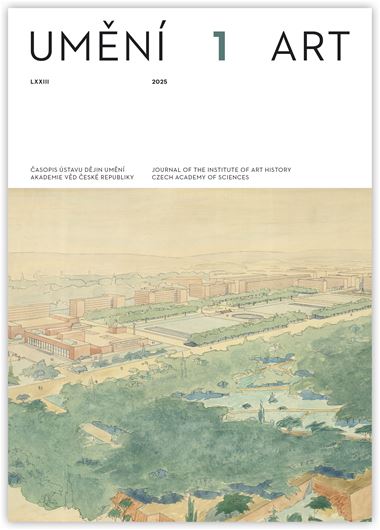Jana Zapletalová
Fedele Raggi, Romanus Sculptor in Moravia
The set of seventeen monumental stone sculptures decorating the unique space of the sala terrena of the Archbishop’s Castle in Kroměříž has long attracted the attention of art historians thanks to its exclusive iconographic programme. This study presents findings regarding the authorship of the hitherto anonymous sculptures, and interprets them primarily within the context of the social connections of the community of artists from Lake Lugano and adjacent regions migrating across Europe in the early modern period. The sculptural ensemble was created by Fedele Raggi (c. 1637–1693), brother of the important sculptor and plasterer of the Roman Baroque, Antonio Raggi (1624–1686). Although the Raggi family settled more permanently in Rome during the course of the 17th century, they originally came from Vico Morcote on the shores of Lake Lugano, and maintained close ties with that community. Thanks to various clues and contexts, it is possible to place Fedele Raggi’s presence in Kroměříž within the coordinates of the structures of one of the artistic networks of those migrant masters who worked for the Bishop of Olomouc and Prince Karl of Lichtenstein-Castelcorno (1624–1695). The text also draws attention to a possible connection between Raggi’s time in Kroměříž and Baldassarre Fontana. This plasterer from Chiasso was strongly influenced not only by Bernini, but also by his compatriot Antonio Raggi, whom he probably knew personally from Rome. The study provides all the known information on Fedele Raggi, including the discovery of a similarly extensive set of sculptures recently attributed to Fedele in the Palazzo Crotta in Agordo. A substantial part of the study is given over to the contextualisation of Fedele’s activities in Kroměříž and, in particular, a consideration of the commissioning strategies of Bishop Karl of Lichtenstein-Castelcorno.
Author's email:
j.zapletalova@upol.cz
DOI: https://doi.org/10.54759/ART-2025-0103
Full-text in the Digital Library of the Czech Academy of Sciences:
https://kramerius.lib.cas.cz/uuid/uuid:ea6bcac5-c39a-4b23-b1fd-db0ea3eae65c_1
< back

